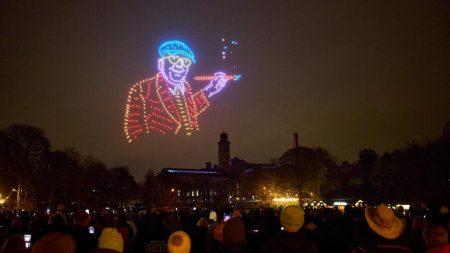The more we look into space with increasingly sensitive tools like NASA’s James Webb Telescope (JWST) and other tech advances here on Earth, the more interesting objects we find floating through what looks less and less like an endless void.
A few recent findings have me thinking more about how the old saying about things being “out of sight, out of mind” ought to actually be top of mind as we ponder the cosmos.
Today the Asteroid Institute announced it has used advanced computational methods to discover 27,500 new, high-confidence asteroid candidates. At the same time, on a completely different scale, the astronomy community continues to be fascinated and baffled by a new crop of free-floating, “rogue” planets spotted by JWST that drift between solar systems, untethered to any particular star.
Just as the Kepler Space Telescope made it clear a decade ago that galaxies are filled with planets — including many that don’t seem that different from Earth in terms of size and temperature — JWST is filling more of the gaps in our broken mosaic view of the universe.
Last year JWST returned breathtaking new images of a distant nebula so precise that they revealed dozens of apparent rogue planets hiding in plain sight.
There’s some room for debate about whether these planets are untethered rogue worlds or actually very dim, so-called “brown dwarf” stars. Adding to the mystery is the fact that some of the objects seemed to be emitting inexplicable radio signals.
Meanwhile, JWST has also taken a closer look at the nearest known rogue planet to Earth, WISE 0855. What the team behind the observations found was a dark, chilly world that might even be in the habitable temperature range according to one model. But as astronomer Phil Plait points out, what’s remarkable is that we can even observe such a dark object at all. JWST’s sensitive infrared instruments make this possible.
“And it makes me wonder… I used to speculate that there might be a brown dwarf closer to us in space than even the Alpha Centauri system,” Plait writes in his newsletter. “Maybe there’s a rogue planet out there, smaller and cooler, that is fainter and escaped our attention. It’s possible, I’d wager.”
Plait notes that JWST probably won’t find it, because of the relatively narrow slice of the cosmos it observes, but a future telescope might be up to the job.
Asteroids All Around Are Just A Start
Meanwhile, earth-bound algorithms are making all new discoveries closer to home without having to incorporate any new observations from telescopes. A partnership between the Asteroid Institute, which is part of the B612 Foundation, and Google Cloud ran billions of old potential asteroid detections through some sophisticated code and cloud tech to yield thousands of previously unfound main belt asteroids and over 100 near-Earth asteroids.
“We always like hard computational challenges, and Asteroid Institute provided us with complex unstructured data that required heavy computational processing, large tracking requirements and novel AI capabilities,” said Massimo Mascaro, Technical Director in Google Cloud’s Office of the CTO.
What leading edge telescopes such as JWST and compute from the likes of Google can achieve are just the beginning. The Asteroid Institute hopes to use data from the new Vera C. Rubin Observatory in conjunction with artificial intelligence and Google Cloud as soon as next year.
“Asteroid Institute results are more than exciting for the Vera C. Rubin Observatory: they may help us reoptimize our observing strategy and obtain gains for some science programs, such as cosmologically important supernovae explosions, equivalent to cloning another Rubin observatory,” said Dr. Zeljko Ivezic, Rubin Observatory Construction Director.
Bottom line: the combination of computational technology on Earth and next-generation telescopes holds a lot of promise for allowing us to paint a picture of our universe in unprecedented new detail.
Read the full article here









